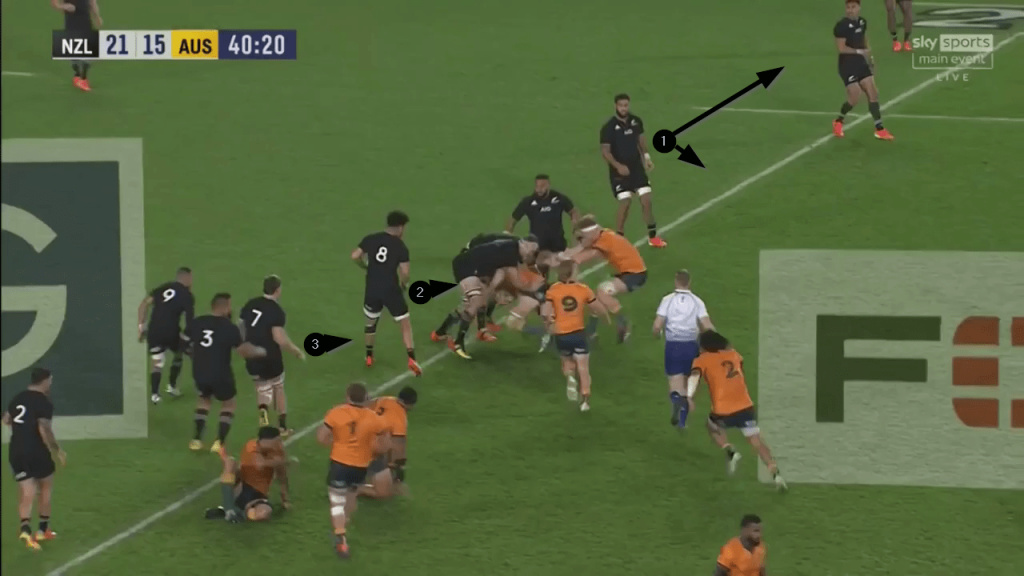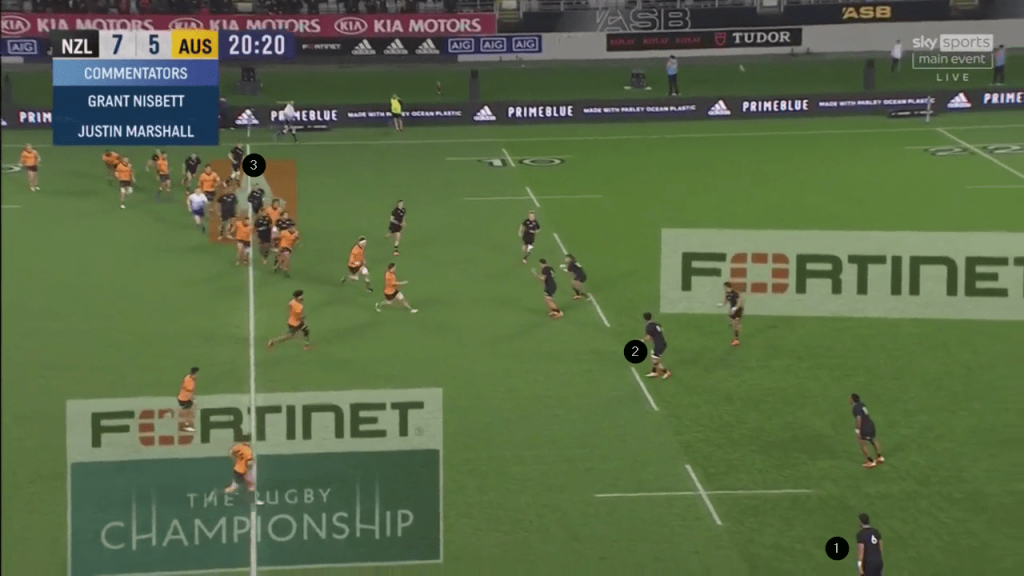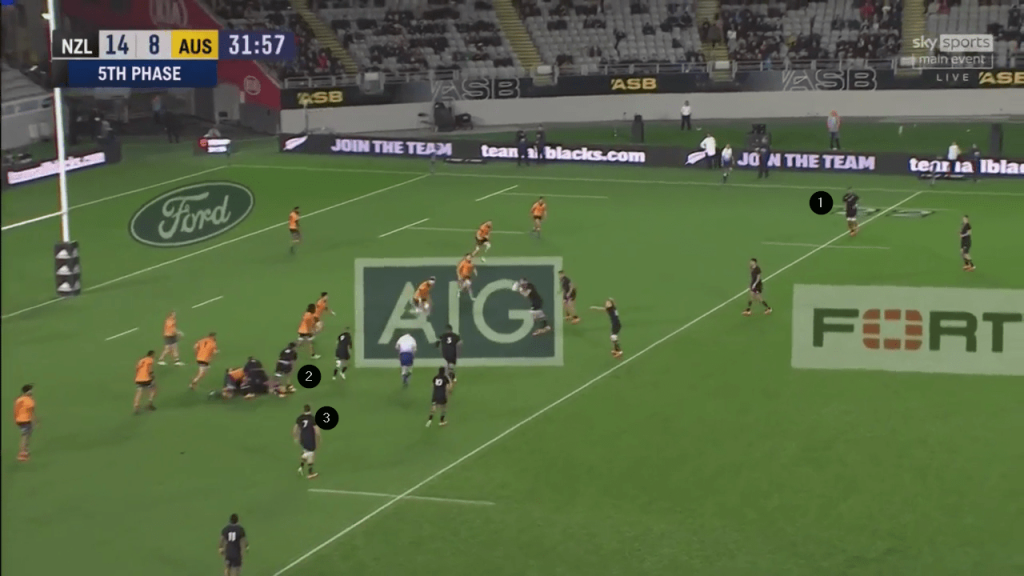Ever since the last great trio of loose forwards finally broke up after the 2019 Rugby World Cup, New Zealand has been searching for the right balance in the back row.
It has not been easy. For so many years, Richie McCaw (followed seamlessly by Sam Cane) at number 7, Jerome Kaino on the blindside flank and Kieran Read at number 8 had been kings in their respective positions. Perhaps the 429 international caps shared between just those four players led to a false sense of security.
With those players in harness, the division of roles was never a problem, because their skill-sets went so far beyond the basic positional requirements. Kieran Read could carry the ball, run the lineout and offload as well as any back on the field. Jerome Kaino made king hits on defence, fulfilled the enforcer role in the tight and still had the energy to play in the wide 15-metre channel on attack. Richie McCaw could scavenge on the ground, link play and do a bit of everything else, to a sky-high standard.
Their potential replacements have been much more limited in scope. Below are the raw stats from Super Rugby Trans-Tasman, illustrating the strengths and weaknesses of the back-rowers in the current New Zealand squad:

- Carry/Tackle intervals represent work rate – the minutes between involvements.
- ‘Decisive Outcomes’ are threefold: the first number is clean breaks, the second dominance at the gain line, the third try or break assists.
The big takeaway specialists on the deck are Papalii (ten turnovers), Savea (nine) and Jacobson (eight).
In the absence of those multi-faceted back-rowers from the great All Black teams of 2011 and 2015, it is best to look at the back-row as a combination of roles, rather than pin skill-sets to jersey numbers.
A clear pattern emerges from the stats. The current squad members who have been primarily used at No 7 by the All Blacks (Dalton Papalii of the Blues and Ethan Blackadder of the Crusaders) are basically tackling machines, with between two and three times the number of involvements on defence compared to attack. Where Papalii offers a bonus via his work on the floor at the breakdown, Blackadder gives an extra ball-carrier on attack – unsurprising, given his regular position on the blindside flank for the Crusaders.
The number 8s and 6s reverse that trend, with every involvement on the carry matched against anywhere between 1.5 and 2.3 contributions on defence. The bonus comes via lineout (Frizell, Jacobson and Sotutu) or breakdown turnovers (Savea and Jacobson).
In the first two Bledisloe Cup games against Australia over the past fortnight, the New Zealand selectors have chosen Ardie Savea and Akira Ioane as their main ball-carriers, with Papalii slotting in to do most of the defensive work. Savea and Papalii can both steal ball at the post-tackle, while the coaches are looking to develop the work of Akira Ioane as the primary back-row option at lineout time.
The basic division of responsibilities over those two matches looks like this:

The two ‘glue’ players in the squad are Ardie Savea and Luke Jacobson, who have both played all across the three back-row positions, and it is not hard to see the Chiefs man replacing Savea in games where a stronger lineout presence may be needed.
In practice, the division of responsibilities out on the field is even more fascinating. Although Akira Ioane is physically the biggest of the trio, he does not tend to take on the tight roles closest to the set-piece or breakdown.
The following examples come from the second test between New Zealand and Australia at Eden Park. On defence, Dalton Papalii and Ardie Savea hunt as a pair on the same side of the field, with Akira connecting to the backs on the other side:

If Papalii either misses or makes a dominant tackle, Ardie will be on hand to pick up the pieces that fall from the table.
This set-up was a repeated theme throughout the game:
At the start of the second half, Papalii is buried in the first tackle with Savea on hand to attack the ball at the breakdown on a ‘tackle & jackal’, should the opportunity arise. Akira is on the other side linking to the first back in defence – in this case his brother Rieko:

The responsibility for covering space out to the first back is unusual for a man of Akira Ioane’s physique, and there is a potential vulnerability if the opponent is able to transfer the ball through hands quickly to Ioane’s side of the field:
Dalton is buried in the tackle, Ardie guards the short-side, and Akira bites in hard on the first short ball-carrier, leaving brother Rieko to cover space to both sides versus the Wallabies captain Michael Hooper.
Why do the All Blacks coaches see Akira Ioane as primarily a loose rather than a tight player in their back-row? The hint of an answer occurred at a driving lineout close to the Australian goal-line:
Ioane sets up on the outside corner of the maul as it forms, but he is comprehensively bullied out of the drive by the combined efforts of Matt Philip, Allan Alaalatoa and Darcy Swain on defence, and the outcome is a turnover scrum.
Akira Ioane was outstanding on attack on his home turf at Eden Park, and the basic philosophy was the same on offence as it had been on the other side of the ball:

Dalton Papalii (3) is trotting back from cleaning out the first ruck on the right, Ardie Savea (2) is in midfield, and the widest attacker is also the biggest man in the back-row, Akira Ioane (1).
This formation bore the ultimate fruit only a couple of minutes later, on a Kiwi counter-attack from deep within their own last third of the field:
Papalii does the spadework cleaning out at the first ruck on the right, with Savea the next back-rower in midfield. Akira Ioane shows good speed to link with the outside backs in the left 15-metre corridor, and makes the right decision to take the inside support option at the critical moment.
Ardie and Dalton tend to play together in tandem on attack, just as they do on D:

This time it is Savea (2) cleaning out, with Papalii (3) in close attendance at the tackle and Ioane (1) out on the far right. The roles were neatly reversed on the scoring phase of the same sequence:
The New Zealand numbers 7 and 8 are developing a symbiotic relationship:
After Dalton makes the initial tackle bust, his instinct is to look inside to Ardie, not outside to Akira for immediate support.
The New Zealand coaches have obviously found a back-row combination they like in the absence of captain Sam Cane, with Aucklanders Dalton Papalii and Akira Ioane book-ending Hurricane Ardie Savea at number 8.
It may not be Read-Kaino-McCaw quite yet, but there are some green shoots of promise and a sense of genuinely complementary roles. Papalii has an enormous appetite for work on defence and at cleanout time, and shows signs of developing a good relationship with Savea on both sides of the ball.
The real enigma is Akira Ioane at number 6. His lineout work is developing nicely and he can run and handle as well as any big man in New Zealand, to the extent that he routinely plays as the widest of the back-rowers on attack. He is often trusted with making the link to the first back on defence.
With the Pumas and the world champion Springboks looming, tougher tests of his mettle in the tight work and in a tighter game await. The likes of Pieter-Steph du Toit, Duane Vermeulen, Pablo Matera and Marcos Kremer will test his physical application to the limit, and beyond.


Comments
Join free and tell us what you really think!
Sign up for free